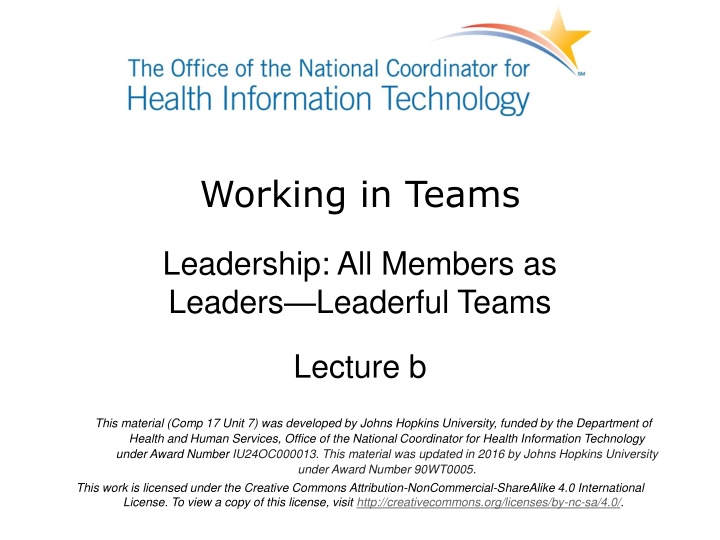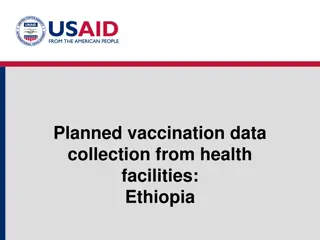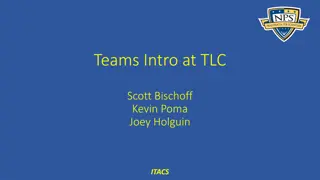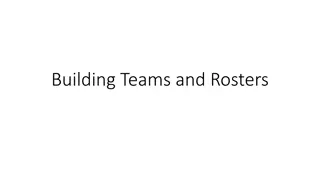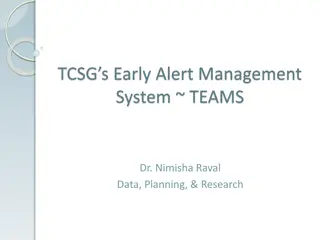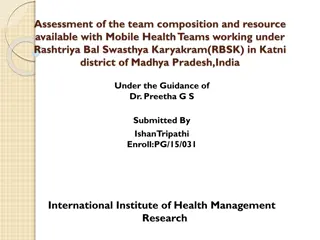Leaderful Teams in Health-Related Environments: A Comprehensive Approach
This material from Johns Hopkins University explores the concept of leaderful teams in health-related environments, emphasizing shared leadership roles and collective decision-making. It highlights the importance of self-awareness, self-leadership, and team leadership in complex and hierarchical settings. The content promotes collaborative, compassionate, and inclusive practices for effective leadership within organizations.
Download Presentation

Please find below an Image/Link to download the presentation.
The content on the website is provided AS IS for your information and personal use only. It may not be sold, licensed, or shared on other websites without obtaining consent from the author.If you encounter any issues during the download, it is possible that the publisher has removed the file from their server.
You are allowed to download the files provided on this website for personal or commercial use, subject to the condition that they are used lawfully. All files are the property of their respective owners.
The content on the website is provided AS IS for your information and personal use only. It may not be sold, licensed, or shared on other websites without obtaining consent from the author.
E N D
Presentation Transcript
Working in Teams Leadership: All Members as Leaders Leaderful Teams Lecture b This material (Comp 17 Unit 7) was developed by Johns Hopkins University, funded by the Department of Health and Human Services, Office of the National Coordinator for Health Information Technology under Award Number IU24OC000013. This material was updated in 2016 by Johns Hopkins University under Award Number 90WT0005. This work is licensed under the Creative Commons Attribution-NonCommercial-ShareAlike 4.0 International License. To view a copy of this license, visit http://creativecommons.org/licenses/by-nc-sa/4.0/.
Leadership: All Members as Leaders Leaderful Teams Learning Objectives Lecture b Develop and implement standards for shared leadership roles in complex, stressful, and often hierarchical health- related environments, Discuss progression from self-awareness to self-leadership to team leadership, Demonstrate collective, concurrent, collaborative, and compassionate activity. 2
Leadership Is Collective The view is that many people within the group might be operating as leaders. The group is not solely dependent on one individual to mobilize action or make decisions. Decisions are made by whoever has the relevant responsibility. Leadership may emerge from multiple leaders of the team. Someone may initiate an activity, but others become involved and share leadership. 3
Leadership Is Collaborative All members of the team, not just the designated leader, are in control of and may speak for the entire organization. All members may advocate a point of view and they believe they can contribute to the common good of the community. The group seeks to engage in public dialogue in which they open their beliefs and values to the scrutiny of others. 4
Leadership Is Compassionate The compassionate leader extends uncompromising commitment to preserving the dignity of others. Team members views are considered before making a decision. Each member of the organization is to be valued regardless of background or social standing. Leaders recognize that values are interconnected with leadership no higher value than democratic participation. 5
Tenets of Leaderful Practice Traditional Serial Individual Controlling Dispassionate Leaderful Concurrent Collective Collaborative Compassionate 6
Changing Face of Teams Change is occurring in how people think about who in the organization has credible and valuable knowledge. Shift is movement away from the idea that knowledge is found only in a select group of experts or best practitioners. The notion is toward the idea that useful knowledge is distributed throughout the whole of the organization. 7
Dixons Summation Teams both give and receive Knowledge transfer Reduces the Not Invented Here Syndrome New knowledge is developed through the transfer process. (Dixon, 1999) 9
ProgressionSelf-Awareness to Self- Leadership to Team Leadership Compassion Emotional Quotient Reuven Bar-On, 1997 Additional aspects to intelligence the social dimension Great leaders develop an understanding of themselves & others Contrast with historical leaders/despots Autocratic style out of vogue Goleman s 1995 best seller, Emotional Intelligence 10
The Four Cs The four C s collective, concurrent, collaborative, and compassionate Activities associated with this unit Structured to stimulate critical thinking Opportunities for group dialog and interaction Role playing 11
Leadership: All Members as Leaders Leaderful Teams Summary Lecture b Different types of leaders, traits, styles, and emerging challenges have been discussed in this unit. Traditional versus distributed models The 4 C s Emotional/social intelligence 12
Leadership: All Members as Leaders Leaderful Teams References Lecture b 1 References Bar-On, R. (1997). The Bar-On Emotional Quotient Inventory (EQ-i): A Test of Emotional Intelligence. Toronto, Canada: Multi-Health Systems. Boston Consortium. What is the Leaderful Concept? Available from: http://www.leaderful.org/leaderful.html Clark DR. Character and Traits in Leadership. (2010). Available from: http://www.nwlink.com/~donclark/leader/leadchr.html Dixon N. (1999) The Changing Face of Knowledge. The Learning Organization; 6(5): p212-216. MCB University Press. Katzenbach J, Palestrant S. Team Leadership: Emerging Challenges, Innovative Leader. 482(9);8. 2000. Available from: http://www.winstonbrill.com/bril001/html/article_index/articles/451- 500/article482_body.html 13
Leadership: All Members as Leaders Leaderful Teams References Lecture b 2 Images Slide 3: Dolls in a circle. Image courtesy of patries 71's photostream. CC BY-NC-ND 2.0. Slide 5: Two women talking. Image courtesy of National Cancer Institute. Slide 6: Army field hospital. Image courtesy of US Army. Slide 8:Expert-Shared Model. Courtesy of Staff of Johns Hopkins School of Nursing. Slide 9 : Image courtesy of Rebuild Lakeshore Available from: http://rebuildlakeshore.com/images/pennpics02.jpg Slide 11: The Four C s. Image courtesy of Patricia Abbott 14
Working in Teams Leadership: All Members as Leaders Leaderful Teams Lecture b This material (Comp 17 Unit 7) was developed by Johns Hopkins University, funded by the Department of Health and Human Services, Office of the National Coordinator for Health Information Technology under Award Number IU24OC000013. This material was updated in 2016 by Johns Hopkins University under Award Number 90WT0005. 15
